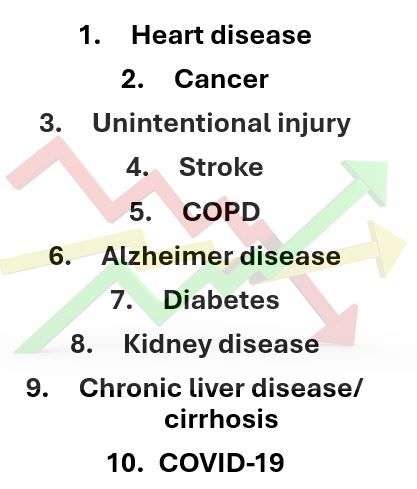US 2023 Mortality Rate Drops 6% as COVID-19 Slides to 10th Leading Cause: New CDC Data
COVID-19 as a cause of death fell from the #4 spot in 2022 to #10 in 2023, which may account for some of the overall decline in the US mortality rate, suggest CDC experts.
©Sebastien Garcia/stock.adobe.com

The overall death rate in the US in 2023 declined by 6.1% from 2022, a drop believed to reflect the fall in COVID-19-related deaths from the number 3 spot in 2021 and number 4 spot in 2022 to number 10 based on a report of provisional 2023 data from the National Center for Health Statistics’ (NCHS) National Vital Statistics System (NVSS).
The 49,928 fatalities attributed to COVID-19 in 2023 represented a 68.9% decrease in the rate recorded in 2022, according to the report published in the CDC’s Morbidity and Mortality Weekly Report on August8. The research team, led by Farida B Ahmad, MPH, from the NCHS, reported that COVID-19 has fallen as the underlying cause of death in the US from 5.7% of all mortalities in 2022 to 1.6% of all deaths in 2023.
US Mortality Overall
Overall annual deaths totaled 3,090,582, according to the estimate, or approximately 750.4 deaths per 100,000, compared with 798.8 recorded in 2022. The 2023 rates were lowest among children and teens aged 5 to 14 years (14.7) and not unexpectedly highest among adults aged 85 years and older (14,285.8), patterns researchers said were similar to those seen in 2022. The overall decrease in deaths from 2022 to 2023 was seen for all age groups, although decline was less pronounced in the youngest, ie, those aged 0 to 4 years. The 2023 mortality rates adjusted for age were higher among men (884.2) than among women (632.8) and reflected the overall decline from 2022 (men, 954.5; women, 666.1). The US mortality rate was highest during the weeks ended January 7 and December 30, the report stated.
Top 10 Causes of Death in 20231

Racial and ethnic minority groups were included under the umbrella 6.1% decline in mortality between 2022 and 2023. However, those who self-identified as Black continued to have the highest age-adjusted death rate. At 924.3 per 100,000, the 2023 mortality rate was 23% higher for Black Americans than for the country as a whole. In 2023, individuals who self-identified as non-Hispanic multiracial had the lowest mortality rate, at 352.1 per 100,000.
The 3 leading causes of death in the US in 2023 were heart disease, cancer, and unintentional injury, the same 3 that have topped the list for years. Although deaths from cancer increased from 2022 to 2023, the rate for heart disease decreased year over year.
The decline in deaths from infection with the SARS-CoV-2 virus was consistent across age groups but the early data show the rate among men was higher than among women (22.1 vs 15.4 deaths per 100,000 population), tracking the difference between the sexes overall. Among racial and ethnic minorities, while deaths related to COVID-19 were lower overall from 2022 to 2023, they were highest among White and American Indian/Alaskan Native persons (AI/AN) (19.6 and 18.7, respectively). Those rates, Ahmad and colleagues pointed out, reflected a shift in populations affected most by the pandemic. From 2020 to 2022, COVID-19 death rates were highest among AI/AN individuals.
The NCHS NVSS compiles annual mortality statistics using data from national death certificates, releasing its final report 11 months after the end of the calendar year. “Provisional death estimates provide an early signal about shifts in mortality trends,” Ahmad and colleagues wrote. “Timely and actionable data can guide public health policies and interventions for populations experiencing higher mortality.” NVSS routinely provides the provisional data, based on information from preliminary death certificates sent to NCHS, for all causes of death including those involving COVID-19. The overview provides a comparison with mortality rates from the previous year, in this report, from 2022.
To code causes of deaths occurring between January and December 2023, the NCHS referred to the International Classification of Diseases, Tenth Revision. Researchers tabulated number and rate of deaths by age, sex, and race and ethnicity, the latter categorized as non-Hispanic Asian, non-Hispanic American Indian or Alaska Native, non-Hispanic Black (Black), non-Hispanic Native Hawaiian or Pacific Islander, non-Hispanic White, non-Hispanic people who identify as more than 1 race (multiracial), Hispanic or Latino, or unknown.
Among the limitations to their research the authors point to the potential for change in the provisional data as additional information becomes available; the impact of timing of death certificate submission for analysis on final reporting; and the potential for misclassification of some racial and ethnic categories, leading to either under- or overestimation of mortality in some groups.